Mammoth Hot Springs, Lower Terraces
Page 1 2
Different parking lots serve the lower terraces at Mammoth Hot Springs. Strictly speaking, even the road, the parking lots and the whole village of Mammoth Hot Springs are built on travertine terraces, the largest of which is called Hotel Terrace. Before you enter the boardwalks, Liberty Cap may be the first feature to catch the eye. Its name is derived from the red Phrygian cap, a symbol of Liberty and the Republic, worn by the Jacobins during the French Revolution from 1789 to 1799. This 11 m (37 feet) tall and approximately 2500 years old ancient hot spring cone rests on Hymen Terrace.
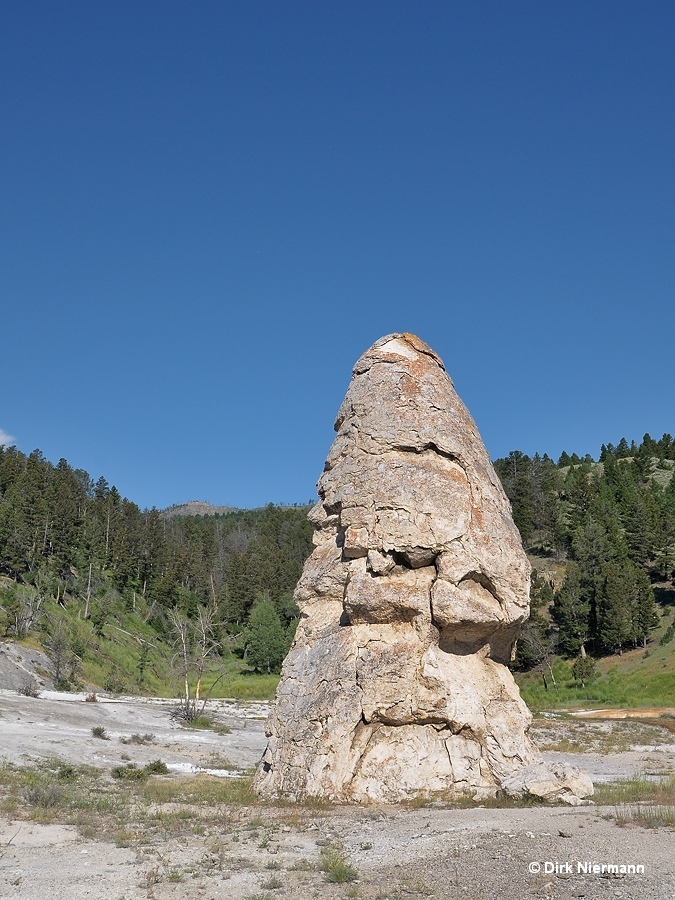
Hymen Terrace, on a par with the lower parking lots, adjoins the southwest edge of Hotel Terrace. At least since the turn of the millennium active vents of Hymen Spring could be observed quite regularly not far northwest of Liberty Cap.
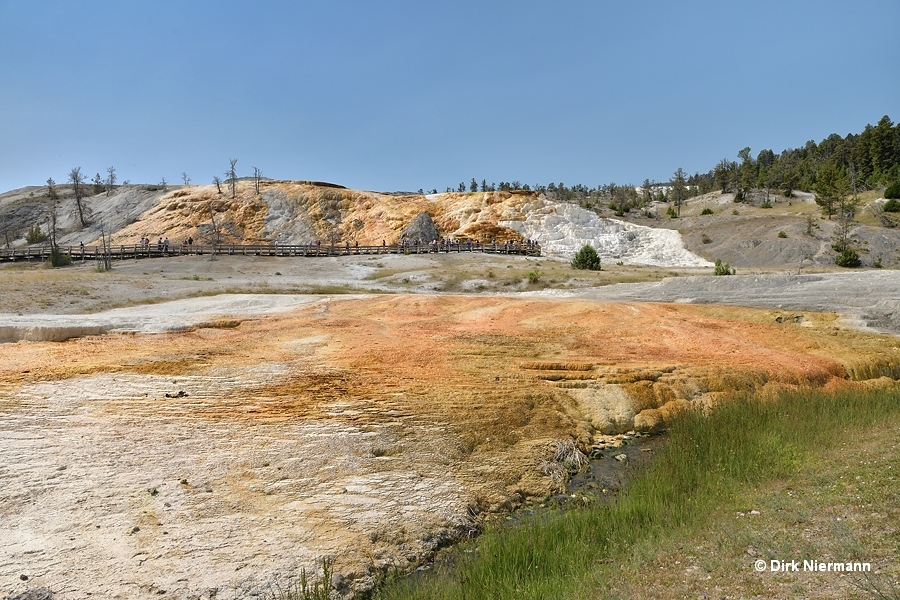
Since the activity of each vent has proven to be limited to a period of a few years in maximum, also the brightly orange colored runoff areas change when a new vent at a new location on Hymen Terrace takes over.
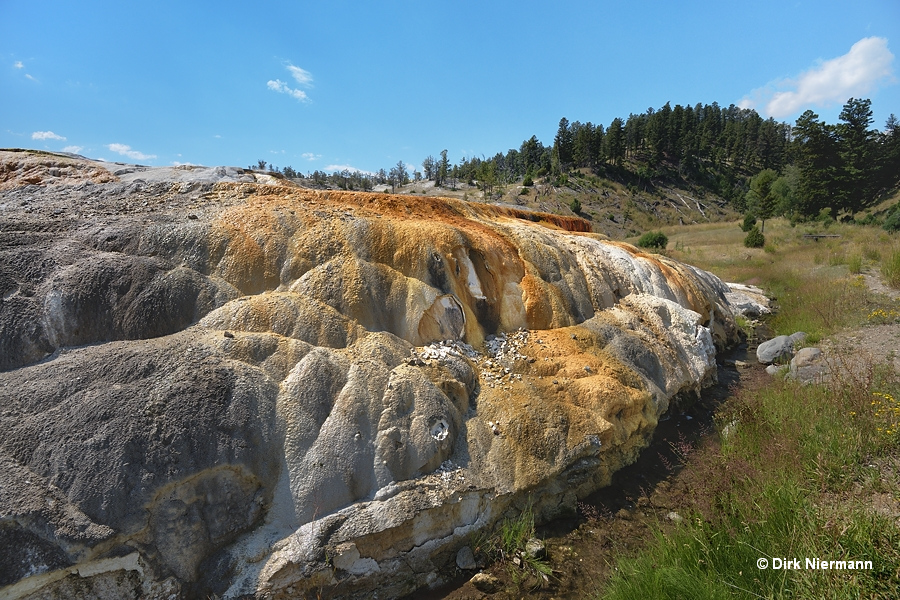
Hymen Spring has been intermittently flowing since their earliest recorded observation in 1870, with a peak of activity up until 1925, when its pronounced terracettes often were the main attraction of Mammoth Hot Springs, and a long dormancy between 1936 and the early 1990s. Looking from above at Hymen Terrace, active vents, dry craters of former vents as well as travertine deposits of different ages can easily be distinguished.
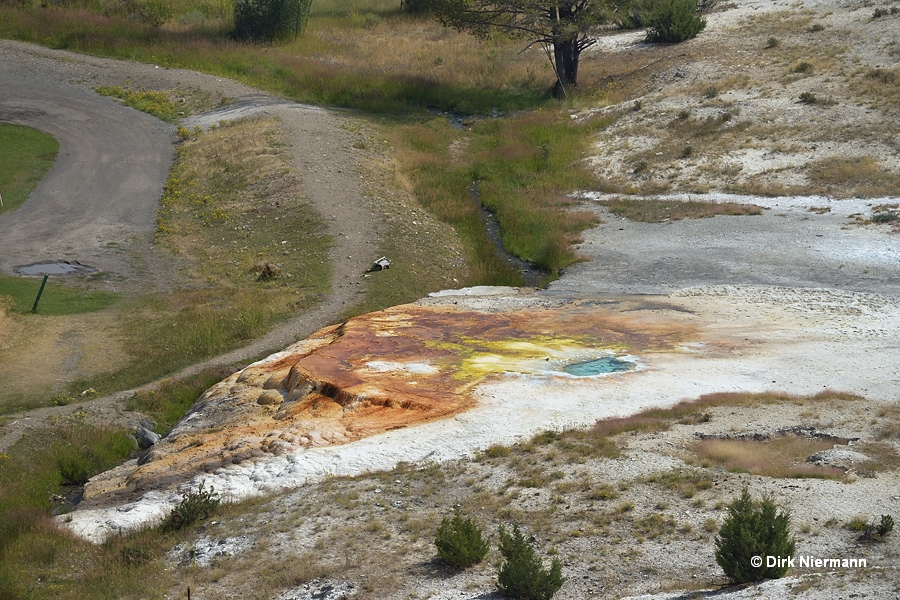
Across the roadway from Hymen Terrace a further, less noticed terrace appears, called Opal Terrace. Even if it is hard to see from afar, Opal Spring is frequently active, mostly in a minor section of the terrace.
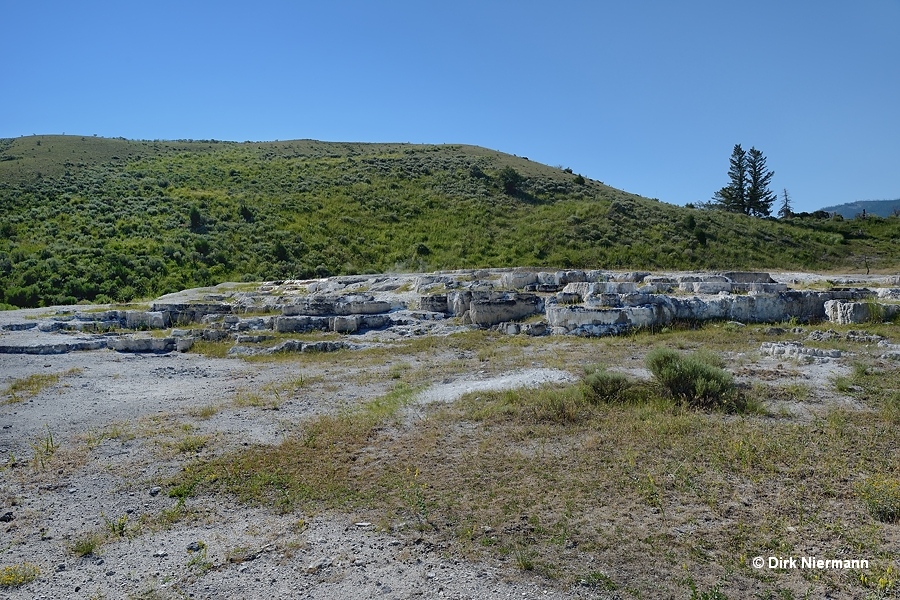
Although at least four vents of Opal Spring have been documented to be intermittently active since the early 1890s, they never flowed high volumes of hot water. Nevertheless, their discharge was strong enough to enforce the removal of a tennis court on site in 1947.
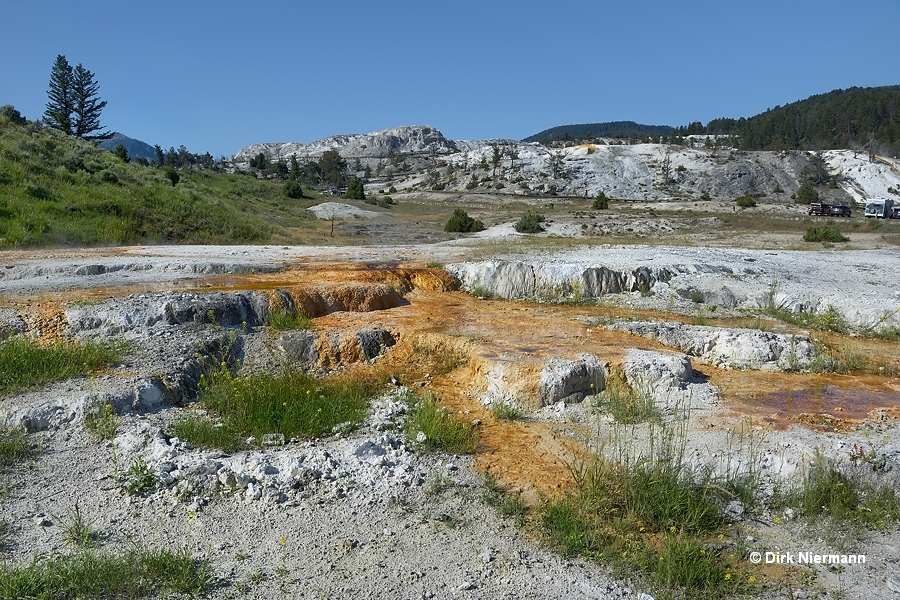
From the level of Hymen Terrace, Palette Terrace rises in a distinctive step. The picture shows the setting in 2011, when the hot springs flowed high volumes of water and generated an extensive orange-brown film of thermophilic microorganisms on the slope. The composition of microbial populations within the runoff resembles that of other mildly alkaline springs in Yellowstone, for example Grand Prismatic Spring. Accordingly, the biofilms in 40 °C to 70 °C (104 - 158 °F) hot outflow areas consist mainly of greenish yellow Synechococcus and orange Oscillatoria and Phormidium cyanobacteria. The subsequent, cooler slope surfaces are sometimes coated by dark green Chloroflexus and Chlorobium microbes, followed by brownish-black Calothrix cyanobacteria. The general rule, the higher the temperatures the more lightish are the colors of the microbes. Scientists also discovered that the formation of travertine is accelerated by the physical presence of thermophilic bacteria.
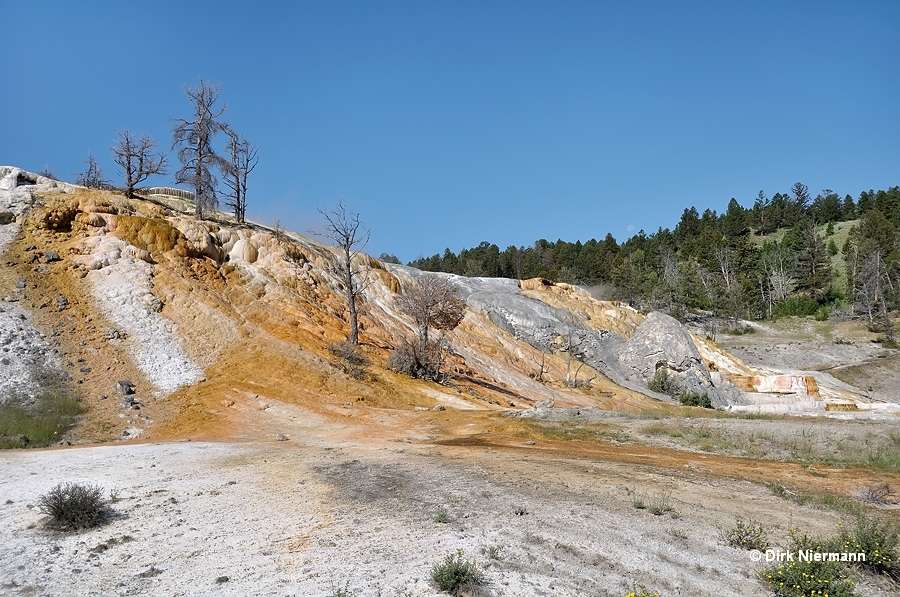
The westernmost of the two primary springs on Palette Terrace is called Palette Spring, which in turn is constisting of two clearly separated vents (this has been the case at least ever since the 2000s). It is known since 1878 and has been intermittently active since then.
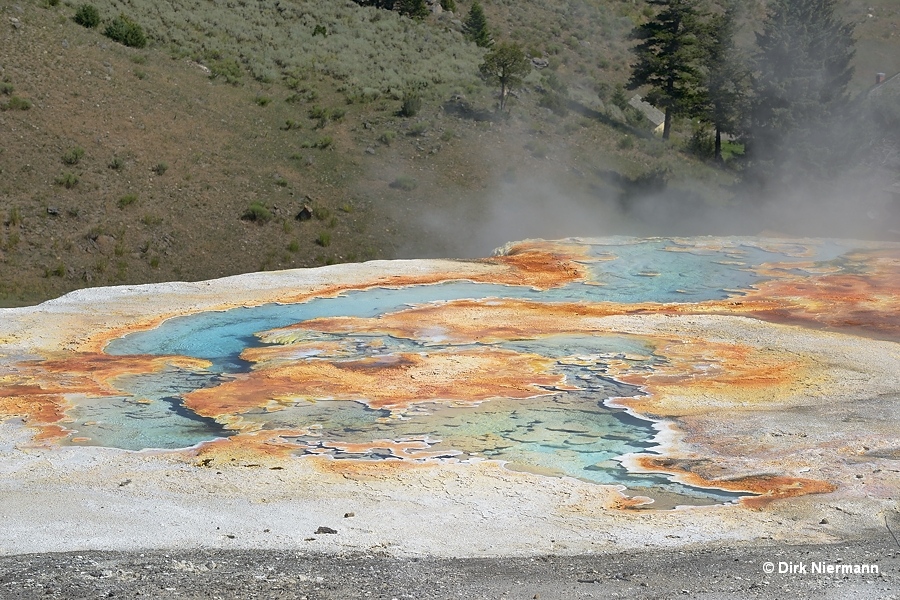
On the way down the slope the carbonate-rich water has built up an impressive cascade of terracettes and ponds over the years. Their formation process is similar to that of rimstone dams found in limestone stalactite caves.
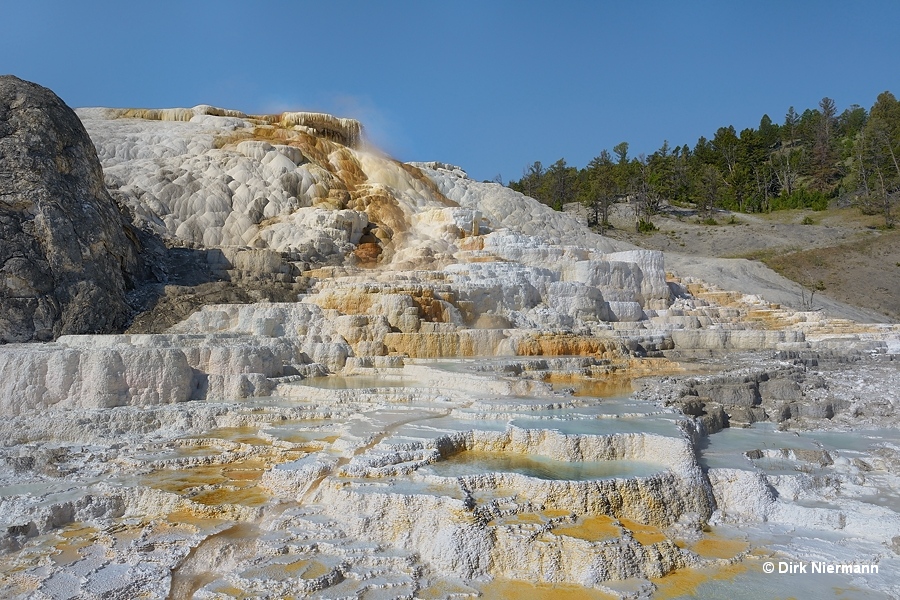
A closer look at the bottom of Palette Spring's overhanging terracette deposit reveals stunning details of stalactites growing down the deposits lip, also called apron channel. If those self-supporting deposites grow too far, a crash becomes unavoidable. Accordingly, several broken overhanging deposites can be seen at Mammoth Hot Springs.
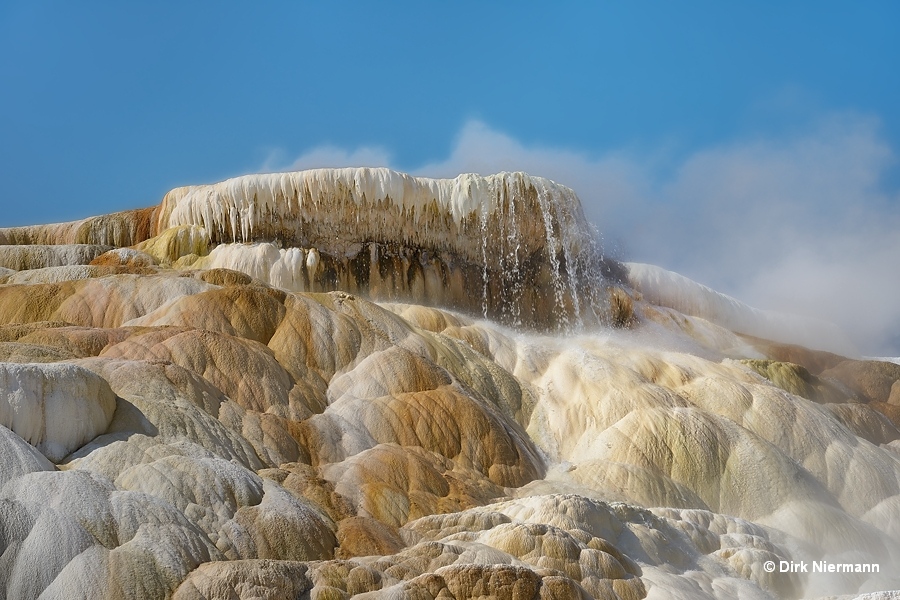
Separated from the western vent by a long ago dried up source pool and by Devil's Thumb, an old hot spring cone, Palette Spring's second vent discharges almost the same volume of water on a broad front down the slope.
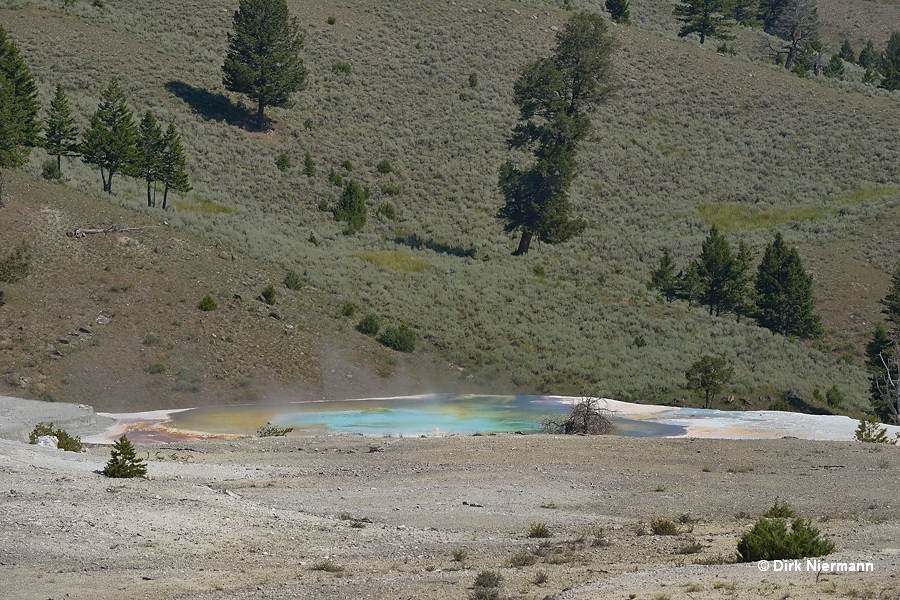
Only the Howard Eaton Trail provides a complete overview of both vents and the expanded runoff at a glance.
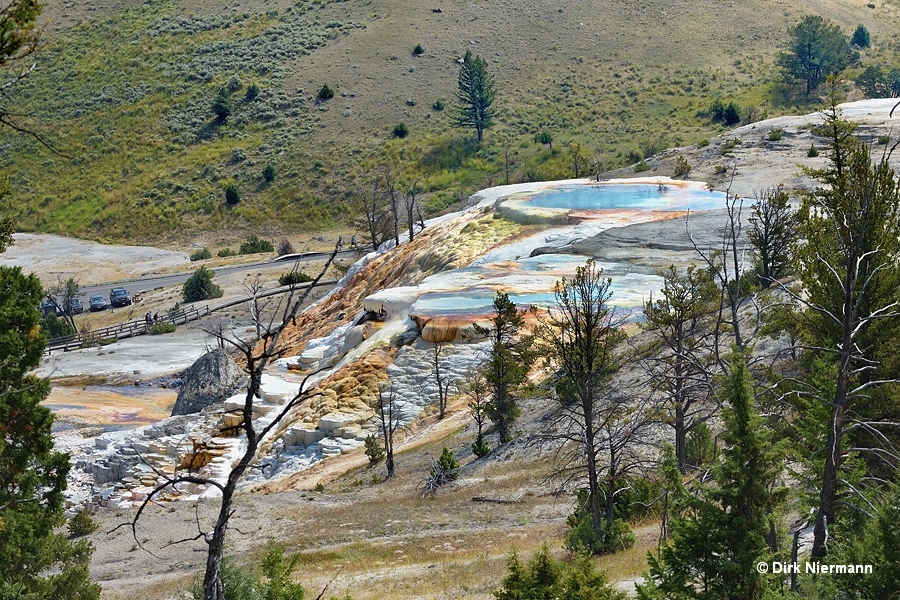
In summer of 2011 the eastern vent had developed an exceptionally wide overhanging terracette deposit at the top edge of the slope.
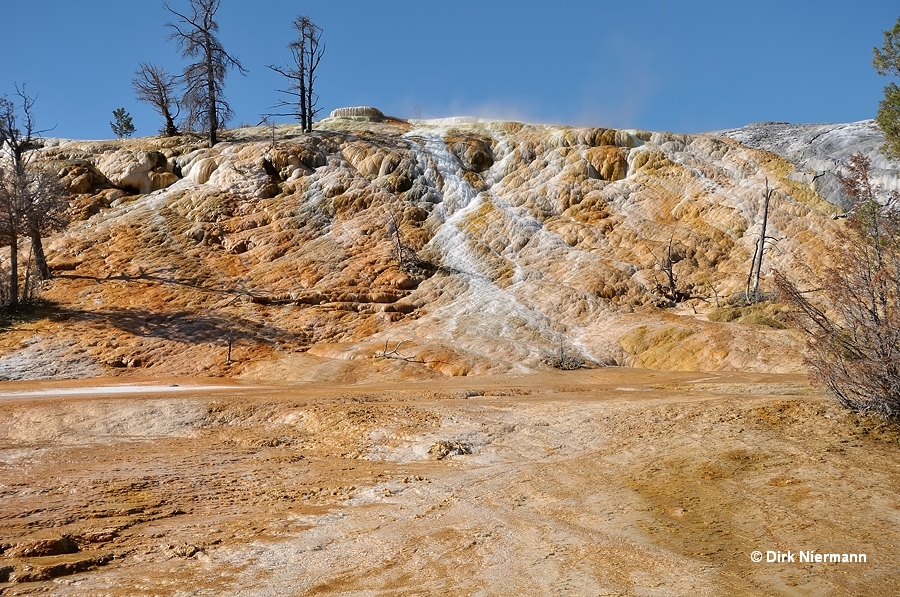
From time to time the development of a completely new feature can be observed at Mammoth Hot Springs. Of course, not every new spring will have a long life, some already disappear after a short time. Southwest of Palette Spring on the level of Palette Terrace we found such a new feature in 2024. It will be fascinating to monitor if this little spring grows further and forms an own sub-terrace or if it vanishes quickly.
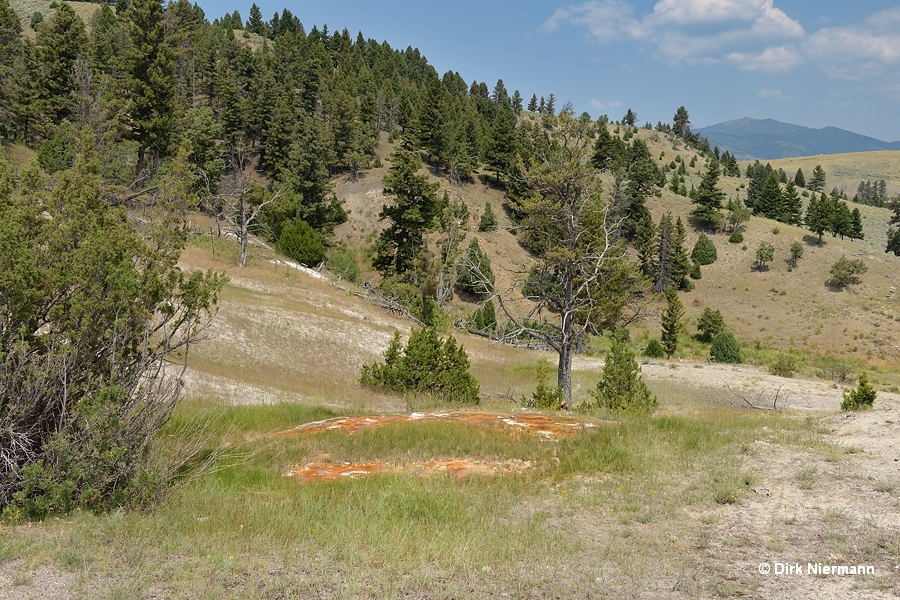
Page 1 2